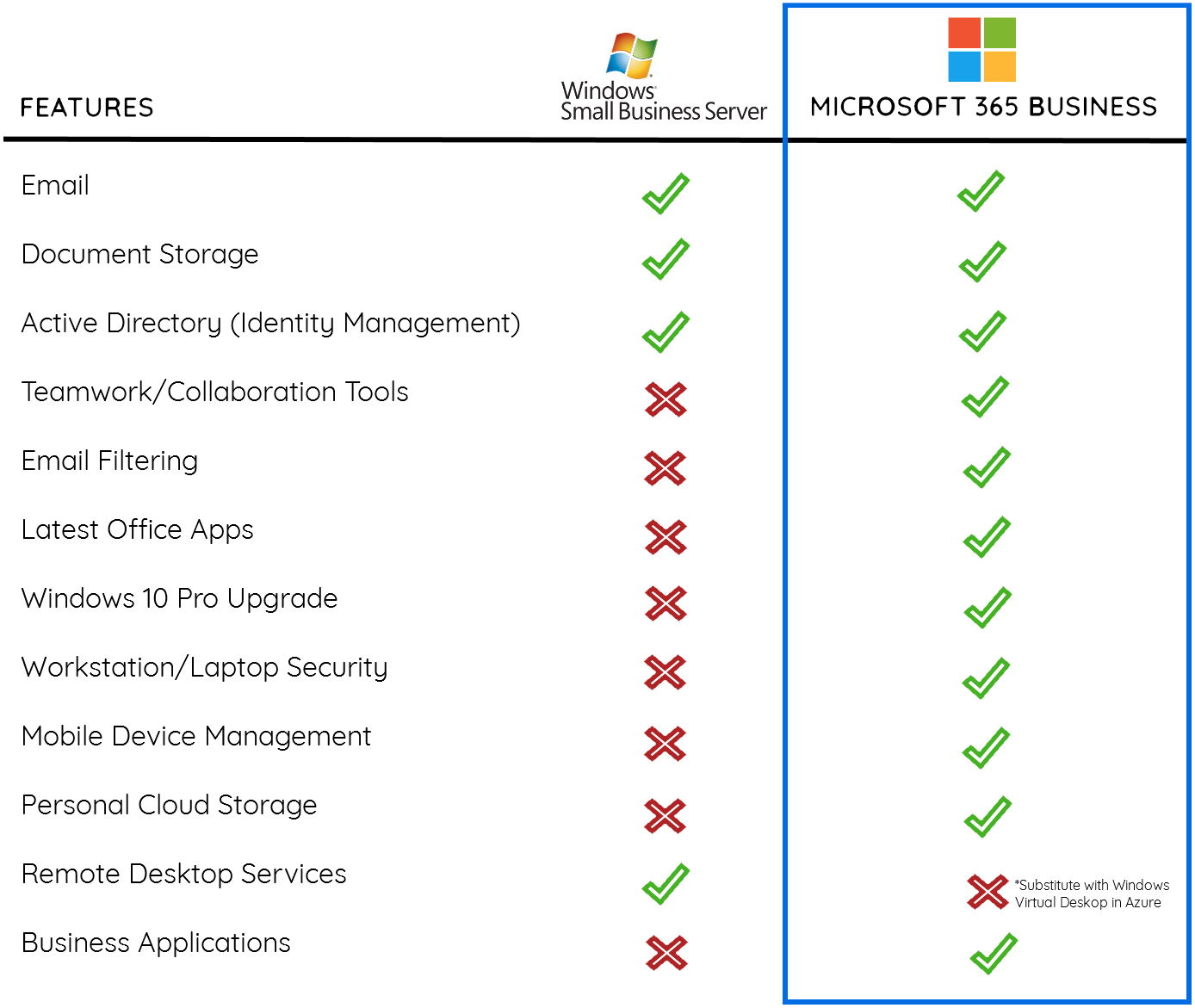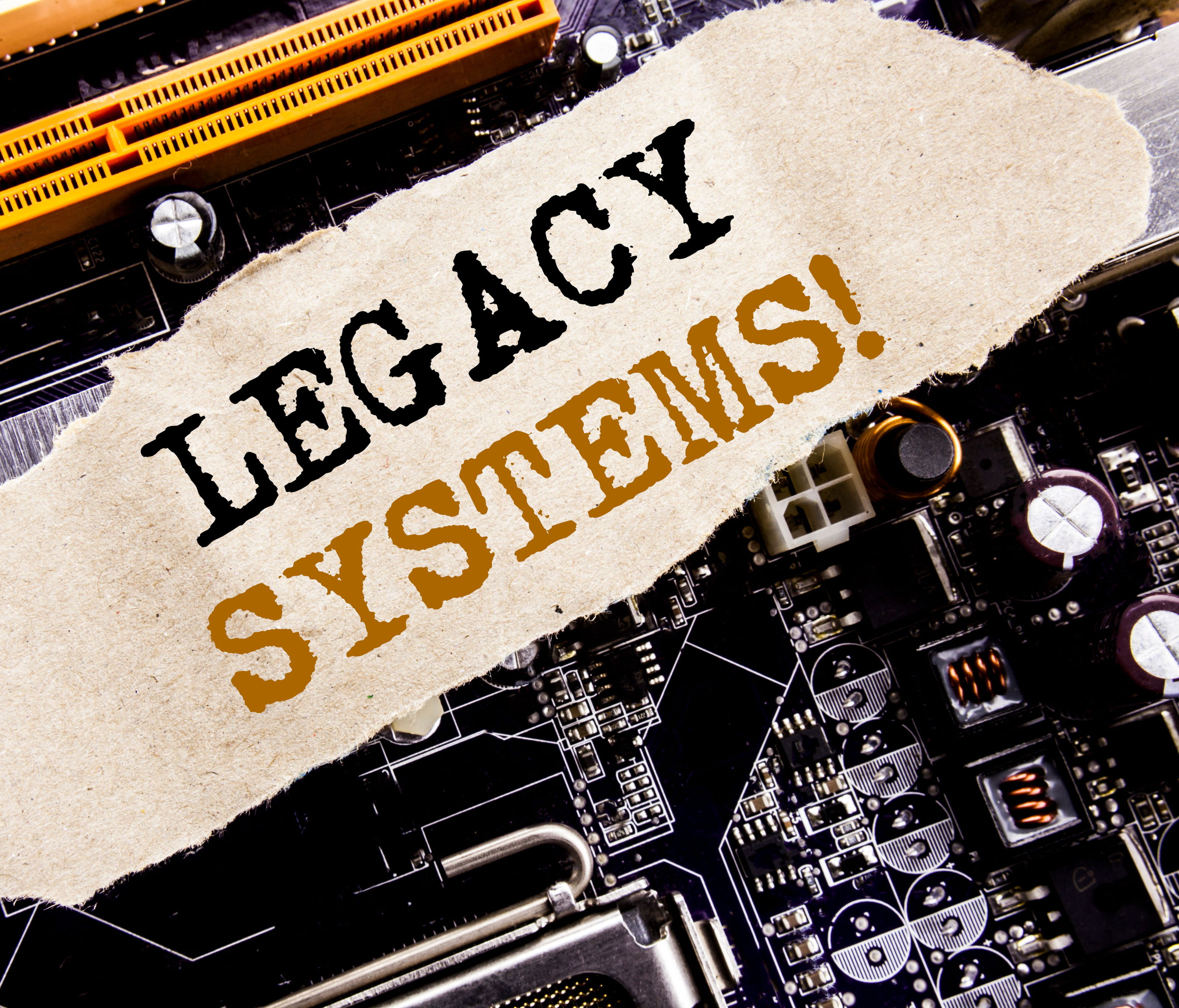End-of-Support (EOS) for on-premise server operating systems like Small Business Server 2011 (SBS) is understandably a daunting and complex circumstance for many small and medium-sized businesses (SMBs) to handle.
EOS isn’t just a case of running out of free updates and support – it signals the need to modernise processes and prepare systems to move forward from a legacy version.
- With SBS set to retire, Microsoft will no longer help you with bug fixes or security patches.
- Your SBS bundled applications and systems are now out-of-date and will be unsupported.
- Without a timely upgrade, you’ll lose competitive advantage, face loss of productivity and more importantly expose unnecessary security risks.
Servers are a central, fundamental component of any business. Transforming your infrastructure is a big project that should never be taken lightly, and with that 14 January 2020 deadline looming fast for Windows Small Business Server 2011, now is the time to analyse your options.
Microsoft 365 Business (M365 Business) is the best successor for businesses needing to upgrade from SBS 2011, offering continuous patches and updates delivered as a subscription service, access to the full Office 365 software suite on multiple devices and a more cost-effective licensing model.
Unsure of where to start, or if M365 Business is your best option? This blog will cover how it can replace your SBS Server and the capabilities and value it offers for your modernisation.
Microsoft 365 Business vs SBS 2011: Cost-effective licensing
Buying into Microsoft 365 Business vs buying a server with SBS (if it was still to be supported), is less complex and more cost effective than the traditional on-premises infrastructure deployment of the past.
- M365 Business, as a cloud-based solution with SMBs in mind, does not include the traditional costs of server hardware, installation or maintenance that we once had to face when deploying on-premises servers.
- As a subscription service (annual commitment), businesses currently pay $27.50 per user per month, which bundles the entire Microsoft Office 365 Business Premium suite (Word, Excel, PowerPoint, OneDrive, Outlook, Teams, Access, SharePoint, the list goes on) as well Windows 10 Pro and advanced device, identity and email security features.
- Because it’s all delivered via the cloud, all of your staff also get the latest versions of every app with regular updates, negating capex costs of future upgrades that were once the reality when running on-prem infrastructure like SBS 2011.
If we look further back, SBS 2011 deployments not only required us to spend money on the server and license for each user or device, but we had to worry about subscriptions to device management software to update our software on a network, as well as 3rd party anti-virus software, email filtering and separate licenses for Exchange and SharePoint servers.
With M365 Business providing a single user license for the entire Office 365 suite (plus more), none of these dreaded and overly complex expenses are a thing anymore.
The result? Your move from SBS 2011 to M365 Business becomes that much more cost effective.

Microsoft 365 Business vs SBS 2011: Serverless email, identity and security
SMBs that need to migrate core capabilities from Small Business Server 2011 – and who want the most seamless transition possible – will find the most efficient option in Microsoft 365 Business.
SBS 2011 bundled a ton of great Microsoft applications and technologies back in the day, including Active Directory (AD), Domain Controller, Exchange Server, Group Policy, Remote Desktop Services and SharePoint. For authentication, email, file-sharing and identity management, it was a great all-round package for on-premises deployments that fulfilled most needs.
However, times and business needs change.
With the proliferation of cloud computing and Software as a Service (SaaS) applications like Office 365; management of email, identity and security is centralised, comprehensive and streamlined. With the likes of Azure Active Directory (AAD) as an example, services such as local AD and Group Policy can safely be retired.
In other words, you don’t need to have a dozen different applications or services to sort out identity and security. It’s all consolidated in always up-to-date monitoring and management toolsets hosted directly in Microsoft’s Cloud, future-proofing your business and keeping everything in one place.
Windows Small Business Server 2011 would have your email system hosted on your server using Microsoft Exchange. Microsoft 365 Business and its Office 365 suite includes Exchange Online, and the migration to cloud-based email hosting is generally very seamless.
Microsoft 365 Business vs SBS 2011: Better communication and collaboration
Microsoft 365 Business includes Teams, one of the best workstream collaboration platforms available for small and medium-sized businesses looking to make internal communications (emails, instant messaging, meetings) a lot more interactive and streamlined than previously possible.
Over 120 million active users of Office 365, many via the Microsoft 365 Business plan, use Teams to bring together all core Office 365 apps and use them within the same platform, providing staff with better flexibility when it comes to communicating with other team members.
Instead of communication getting lost in a chain of emails, or meetings being bound to the physical office, Teams makes it easy to create channels to consolidate all file-sharing, announcements, tasks, schedules and chat in one place, and you can easily run your phone system within Teams and create meetings via the platform without anyone having to miss out.
In short, on-premises servers like SBS 2011 were great for their time, but the new collaboration features and possibilities with M365 Business and Teams make it foolish to ignore if you want your business to improve in this space.
Microsoft 365 Business vs SBS 2011: Work anywhere mobility
With SBS 2011, the old way to access on-site networks and assets while off-site was via Remote Desktop. While reliable for the most part, if the Internet connection in the office went out, all server files, emails and the lot were basically inaccessible for remote workers.
With Microsoft 365 Business being a cloud-based suite, none of these limitations exist anymore. Your staff can work wherever they want, whenever they want – so long as they have an Internet connection. Without on-premises servers to worry about, you aren’t locked out if something goes wrong at the physical office. You can even sync files offline for cases where Internet may not be available.
Office 365 also has mobile native apps and online versions of its software, including Word, Excel and PowerPoint. If you need to make a quick change to a document on your mobile, or last minute changes to a presentation and you’re working remotely on a customer’s site, you can do so without the need for a VPN. In terms of mobility, it’s a lot more seamless than what was possible with SBS 2011.

Moving from SBS 2011 to Microsoft 365 Business: Next essential steps
As the evolution of cloud-based applications and infrastructure continues to overhaul the way we do business, it’s safe to say while Small Business Server (SBS) had a good run, it’s time to say goodbye.
The one remaining roadblock that many businesses will face once they transition from EOS SBS 2011 to modern platforms like Microsoft 365 Business is legacy applications/line-of-business applications that are critical to the business and stuck hosted on on-premises servers.
Our recommendation is to assess those legacy apps (if they’re still supported by the vendor) and find out if they offer an equivalent cloud service. If there isn’t, and it’s something you can’t get rid of, it’s easy to virtualise those legacy applications in the cloud using Microsoft Azure and Windows Virtual Desktop.
Not sure where to start with moving your legacy apps over, or still unsure about the broader benefits of Microsoft 365 Business when moving over from SBS 2011?
Expert consultancies like MODEX can help guide your transition end-to-end, and ensure Microsoft 365 Business ticks off the right boxes for the infrastructure, business outcomes and support you need to succeed.


